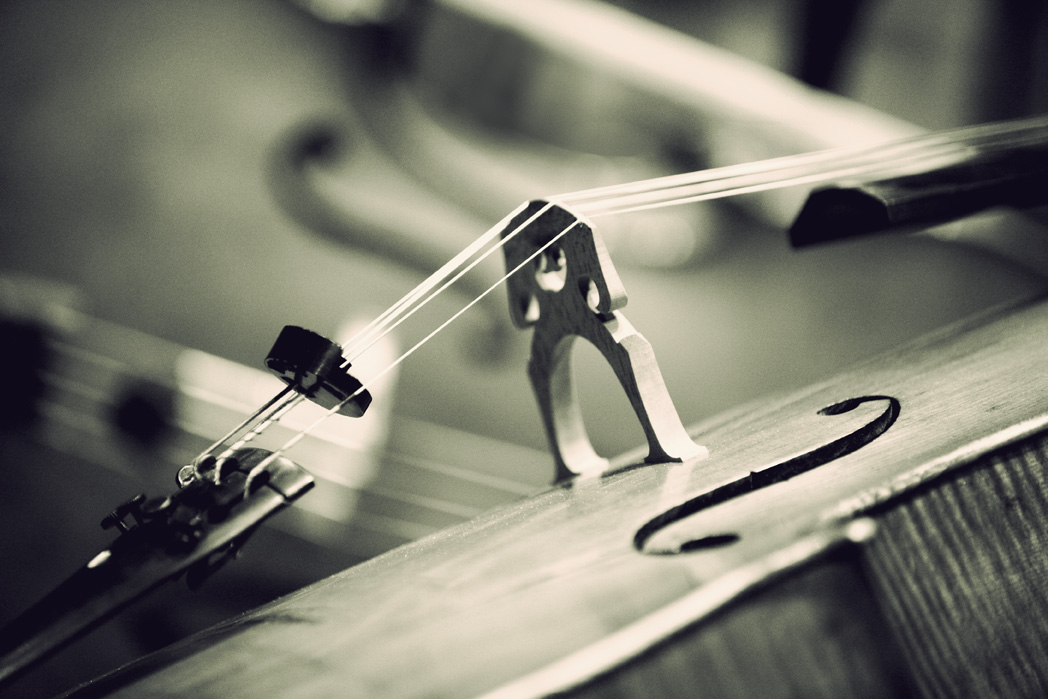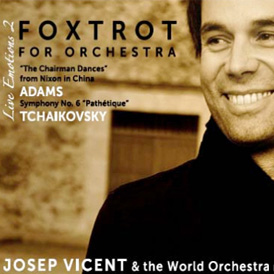ONGOING AUDITIONS PROCESS 2015
PRINCIPAL CONDUCTOR – JOSEP VICENT
GENERAL INFORMATION
• The World Orchestra is formed by musicians from all over the world that meet twice a year to live and make music together for a few weeks. The orchestra is a unique international educational project and its musicians are Cultural Ambassadors for Peace of the Foundation for a Culture of Peace. For further information visit www.theworldorchestra.org
• Musicians do not have to pay a fee to participate in the project. Musicians must cover their travel costs from their country of residency to the country where the session will take place. All other costs of musical tuition, accommodation in double rooms, full board and transport within the tours are covered by the orchestra.
• Candidates must be aged between 18 and 28 at the time of application.
• Musicians of all nationalities can apply to join the orchestra, but they must have a valid passport and be able to apply for any visas required for their travel, should they need them.
• The orchestra’s working language is English, so candidates must have an intermediate level of English.
• Orchestra members may be invited to remain in the orchestra in successive sessions, depending on the needs of the orchestra and provided that their work with the orchestra has been satisfactory.
• The number of new member musicians admitted to the orchestra will depend on the quality of the auditions received.
AUDITION CATEGORIES
The World Orchestra is looking for soloists and tutti in the following instruments:
VIOLIN
VIOLA
VIOLONCELLO
DOUBLE BASS
FLUTE and PICCOLO (candidates must audition for both instruments)
OBOE and ENGLISH HORN (candidates must audition for both instruments)
BASSOON
BASSOON/DOUBLE BASSOON
CLARINET
CLARINET/EB CLARINET
CLARINET/BASS CLARINET
CLARINET/EB CLARINET/BASS CLARINET
FRENCH HORN
TRUMPET and PICCOLO TRUMPET (candidates must audition for both instruments)
TROMBONE
BASS TROMBONE
TUBA
PERCUSSION
TIMPANI/PERCUSSION
PIANO (free repertoire)
HARP (free repertoire)
RECORDING REQUIREMENTS
Your recording should contain 2 excerpts of the attached list as well as a piece of free choice lasting a minimum of 4 minutes and a maximum of 8 minutes.
The recording can be made with or without accompanying piano.
We do not require a professional or studio recording, but the sound quality must be as good as possible.
Recordings must be unedited.
At the beginning of the recording you must state your full name, country and instrument(s).
HOW TO SEND US YOUR AUDITION?:
Once you have done your recording you should upload it to www.vimeo.com making it password protected, so that only The World Orchestra (or other people you give permission to) can have access to it. or www.youtube.com making it as unlisted.
When you have uploaded your recording you should fill in the attached form and send it by email to angela.benavent@theworldorchestra.org. Do not forget to include the Vimeo link to your recording and the password.
LIST OF ORCHESTRAL EXCERPTS
All excerpts are available in the Orchester Probespiel publications by Peters or Schott. The World Orchestra cannot provide copies of the orchestral excerpts.
Important note: Percussionists and timpanists must play all excerpts listed, as well as a piece of free choice. Musicians auditioning for more than one instrument (i.e. Flute/Piccolo, Oboe/English Horn, Clarinet/Bass Clarinet, Bassoon/Contrabassoon etc) must record two excerpts of each instrument, and a piece of free choice of the main instrument.
Violin
L. van Beethoven, “Leonore” Overture n. 3, Op. 72 a, Allegro to Presto
J. Brahms, Symphony n. 1, 4th Mvt. c-minor, Op. 68
W. A. Mozart, Symphony n. 41 in C-Major, K.551 “Jupiter”
I. Stravinsky, “The Rite of Spring” 1st part – “Danses des adolescents”.
R. Strauss, Don Juan, Op.20 Allegro molto con brio
B. Bartok, Concerto for Orchestra, 5.Mvt (First violin)
Viola
A. Bruckner, Symphony n.4 in Eb-Major “Romantic” 2nd Mvt. Andante
G. Mahler, Symphony n.10 1st Mvt. Adagio
B. Bartok, Divertimento for String Orchestra, 2nd and 3rd Mvt.
C. Debussy, “La mer”, 2nd and 3rd mvt.
C. M. von Weber, “Euryanthe”, Overture, Op.81
A. Berg, “Lulu”, 2nd Act.
Cello
L. van Beethoven, Symphony n. 5 in c-minor, Op.67 2nd Mvt.
J. Brahms, Piano Concerto n. 2 in Bb-Major, Op.83 3rd Mvt.
W. A. Mozart, “Don Giovanni” 1st Act. Aria n. 12
R. Strauss, “Don Juan”, Op.20
I. Stravinsky, Symphony in C
C. M. von Weber, Aufforderung Zum Tanz (Invitation to the dance), Op.65
Double Bass
L. van Beethoven, Symphony n. 9 in d-minor, Op. 125, 4th Mvt. Presto
W. A. Mozart, “The Magic Flute”, Overture, K 620
I. Stravinsky, Pulcinella Suite, 7th Mvt. Vivo
G. Verdi, “Othello”, 4th Act.
G. Mahler, Symphony n. 1 in D-Major, 3rd Mvt.
A. Berg, “Wozzeck “, 2nd Act.
Flute
L. van Beethoven, Overture to “Leonore” n. 3, Op. 72a
J. Brahms, Symphony n. 4, Op. 98, 4th Mvt.
F. Mendelssohn, “A Midsummer Night’s Dream”, Op. 61, Scherzo
M. Ravel, “Daphnis et Chloè”, Suite n. 2
G. Mahler, Symphony n. 9 in D-Major, 1st Mvt.
I. Stravinsky, “Petruschka”, Vivace and Cadenza “poco più mosso”.
Piccolo
L. van Beethoven, Symphony n. 9 in d-minor, Op.125 4th Mvt. “Alla Marcia”
G. Rossini, “Semiramide” Overture
P. Hindemith, Nobilissima Visione, 2nd Mvt. Marsch and Pastorale
Oboe
J. Brahms, Violin Concerto in D-Major Op.77 2nd Mvt. “Adagio”.
F. Mendelssohn, Symphony n. 3 in a-minor, 2nd Mvt. “Vivace non troppo”.
R. Strauss, Don Juan, “a tempo ma tranquillo”.
I. Stravinsky, “Pulcinella”.
Rimsky-Korsakov, “Sheherazade” Op. 35.
Mussorgsky / Ravel, “Pictures at an Exhibition”.
English Horn
H. Berlioz, “Roman Carnival” Op. 9, Overture Andante sostenuto.
A. Dvorak, Symphony n. 9 in e-minor “New World” Op. 95 2nd Mvt. Largo.
G. Rossini, Overture “Guglielmo Tell”.
M. de Falla, “El Sombrero de tres Picos” (“Three Cornered Hat”).
Clarinet
L. van Beethoven, Symphony n. 4, 2nd Mvt. Adagio
Z. Kodaly, “Dances of Galanta”
F. Schubert, Symphony n. 7, “Unfinished” 1st and 2nd Mvts.
I. Stravinsky, Petruschka 2nd Mvt.
C. M. von Weber, “Oberon” Overture
G. Mahler, Symphony n. 7 in e -minor, 2nd Mvt. “Nachtmusik”
Bass Clarinet
R. Strauss, “Don Quixote” Op.35
I. Stravinsky, “The Rite of Spring”
D. Schostakovitsch, Symphony n. 8 in c-minor, Op. 65, 5th Mvt.
Eb Clarinet
H. Berlioz, “Symphonie Fantastique”, Op. 14 5th Mvt.
M. Ravel, “Boléro”.
R. Strauss, “Salome”, Op 54.
Bassoon
W. A. Mozart, “The Marriage of Figaro”, Overture, K.492 Presto
D. Shostakovich, Symphony n. 9 Op.70 Largo-Allegretto
B. Smetana, “The Bartered Bride” Overture.
I. Stravinsky, “Firebird” Suite
M. Ravel, “Boléro”
P.I. Tchaikovsky, Symphony n.4, 2nd Mvt.
Contrabassoon
L. van Beethoven, Symphony n. 9 in d-minor, Op.125 4th Mvt.
M. Ravel, Piano Concerto in D-Major Lento
A. Berg, “Wozzeck”.
French Horn
L. van Beethoven, Symphony n.9 in d-minor, Op.125 3rd Mvt.
D. Shostakovich, Symphony n. 9, Op. 70
I. Stravinsky, “Symphony of Psalms”
R. Strauss, “Till Eulenspiegels lustige Streiche” , Op. 28
P. I. Tchaikovsky, Symphony n.5 in e-minor, Op. 64 2nd Mvt.
P. Hindemith, “Symphonia serena”
Trumpet
B. Bartok, Concerto for Orchestra 5th Mvt.
L. van Beethoven, “Leonore” Overture n. 3 in Bb-Major
G. Mahler, Symphony n. 3 (post horn solo)
M. Mussorgsky, “Pictures at an Exhibition” I. “Promenade”
I. Stravinsky, “Le Chant du Rossignol”
A. Scriabin, “Le Poème de l’extase”
Piccolo Trumpet
M. Mussorgsky, “Pictures of an Exhibition”, “Samuel Goldenberg”.
J. S. Bach, “Christmas Oratorio” (Weihnachtsoratorium BWV 248)
Trombone
M. Ravel, “Boléro”.
G. Rossini, “Guglielmo Tell”, Overture
R. Strauss, “Also sprach Zarathustra”, Op. 30
A. Berg, Drei Orchesterstücke Op.6 Präludium, Marsch
G. Mahler, Symphony n. 3 in d-minor, 1º Mvt.
Bass Trombone
R. Strauss, “Till Eulenspiegel”
Z. Kodàly, “Hary Janos”, Suite 4th Mvt.
H. Berlioz, “Symphonie Fantastique” 4th Mvt.
J. Haydn, “Die Schopfung”-Nr.26 Chorus
G. Rossini, “Guglielmo Tell”, Overture
R. Wagner, “Die Walkúre – 3 Aufzug 1 Szene(Walkúnenritt)y 3 Aufzug 2 Szene
Tuba
A. Bruckner, Symphony n. 7, 1st and 4th Mvts.
G. Mahler, Symphony n. 1 in D-Major, 3rd Mvt.
S. Prokofiev, “Romeo and Juliet” Op. 64,
I. Stravinsky, “Petruschka”, “Bär und Mann”, and “Die Masken”
B. Bartok, Concerto for Orchestra, Final
L. Delibes, “Coppelia”, 1st Act. n. 4 Mazurka.
Percussion
M. Ravel, “Alborada del Gracioso” (Snare Drum)
P. I. Tchaikovsky, Symphony n. 4, Op.36 (Cymbals)
G. Gershwin, “Porgy and Bess” (Xylophone)
C. Debussy, “La Mer” n. 2 and n. 3 (Glöckenspiel)
N. Rimsky-Korsakov, “Sheherazade” (Snare Drum)
Timpani
I. Stravinsky, “The Rite of Spring” (Timpani)
L. van Beethoven, Symphony n. 5, Allegro, tempo 84 (Timpani)
P. Hindemith. Symphonic Metamorphoses (Timpani)
Piano
Free repertoire. Your recording should contain 2 orchestral excerpts as well as 1 piano concert lasting a minimum of 4 minutes and a maximum of 8 minutes with each piece.
Harp
Free repertoire. Your recording should contain 2 orchestral excerpts as well as 1 harp concert lasting a minimum of 4 minutes and a maximum of 8 minutes with each piece.








